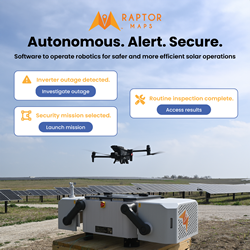NREL Research Team Wins R&D 100 Award
The National Renewable Energy Laboratory and First Solar have been selected to receive a 2003 R&D 100 award from R&D Magazine for developing a new process for depositing semiconductor layers onto photovoltaic (PV) modules.
The U.S. Department of Energy's (DOE) National Renewable Energy Laboratory (NREL) and First Solar have been selected to receive a 2003 R&D 100 award from R&D Magazine for developing a new process for depositing semiconductor layers onto photovoltaic (PV) modules. The annual awards recognize the year's 100 most significant technological innovations.
The process, High-Rate Vapor Transport Deposition (HRVTD) quickly and uniformly deposits semiconductor layers for PV module manufacturing. It is the world's first such very high deposition-rate mass-production method for making thin-film solar electric modules.
Historically, the high price of solar cells and the lack of cost-saving mass-production techniques limited the mainstream adoption of solar into the domestic grid-connected market. This award-winning method of deposition, when used in sufficient volume, is likely to produce the lowest price per watt PV modules available in the world.
"This deposition is in some sense the answer [to introducing PV modules into domestic electricity markets], and I believe this will help us turn the corner in thin film PV," said Ken Zweibel, manager of NREL's Thin Film Partnership. "It won't happen overnight, but it will happen if this technology is fully developed and manufactured in large volume."
The HRVTD process, besides being reliable and relatively inexpensive, can be used to make the active layers of an entire PV module in as little as 40 seconds - more than 10 times faster than its nearest rival.
"This is a significant step forward in the commercialization efforts of thin film PV technology", said Harin Ullal, senior project leader for NREL's National Center for Photovoltaics.
NREL developers included Ullal, Zweibel and Bolko von Roedern. First Solar's Rick Powell was the lead designer of the deposition system. This year's announcement brings to 35 the number of R&D 100 awards garnered by NREL.
"We are pleased with the performance of the HRVTD system and will further develop this technology with the assistance of NREL," Powell, manager of Semiconductor Technologies with First Solar, said. "NREL's long standing support has been instrumental to First Solar achieving this breakthrough."
NREL is a U.S. Department of Energy national laboratory managed by Midwest Research Institute, Battelle and Bechtel. The laboratory is a leading center for research into solar energy technologies, wind energy, plant- and waste-derived fuels and chemicals, energy-efficient buildings, advanced vehicle design, geothermal energy and hydrogen and fuel cells technologies.
First Solar is a leader in the development and manufacture of high quality, affordable solar modules. With its state-of-the-art manufacturing facility in Perrysburg, Ohio, First Solar is producing high performance PV modules for large-scale solar power plants, commercial and residential buildings, and off-grid rural electrification applications. First Solar is committed to the continuous improvement of its advanced, thin film semiconductor deposition and high volume manufacturing processes to meet the demand for lower cost solar energy solutions.
Featured Product

